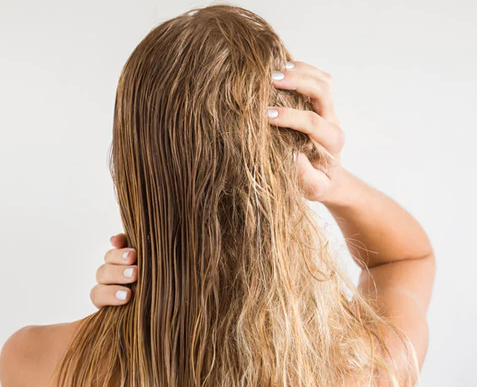5 Common Habits that Dehydrate Natural Hair & How to Fix
Maintaining proper hydration is essential for the health and vitality of natural hair. However, certain habits can contribute to dehydration, leading to dryness, breakage, and overall hair damage. Today we are talking about common habits that dehydrate our natural hair, and this can be for relaxed hair and texturized hair as well.
5 Common Habits that Dehydrate Natural Hair & How to Fix
1. Lifted Cuticle
The first common habit that dehydrates our natural hair and this can also be applied to relax and texturized hair as well is having a lifted cuticle. When it comes to the structure of our hair, you know we have a cuticle we have a cortex and in most cases, we have a medulla. When it comes to moisture and dryness, we have to be very cautious of our cuticle because it is a cuticle that maintains the hydration within our hair. However, excessive heat, crazy brushing can definitely lift the cuticle including high hygral fatigue, moisture overload can lift our cuticle. And the tricky thing with that is even though we can put the most moisturizing creams and liquids in, if we have a lifted cuticle, that moisture is not going to stay in where it needs to be.
How to fix:
Lay off the heat try, not to do it too often. If you are going to use heat, always use a protectant for sure. When you are brushing your hair and combing your hair, do it very gently, do not rush through the process, do not be rough with it. And pre-poo, this is an amazing way to prevent hygral fatigue, you want to do this with pre-shampoo, and just put that throughout your hair, detangle your hair with it put a shower cap on, leave it on for at least 20 to 30 minutes and that's going to help tremendously with making sure your cuticles are sealed. And then also make sure your hair retains the most amount of moisture.

2. Product Build Up
This is a big one for us because we use a lot of gels and creams and butters and pomades, a lot of this stuff is good for our hair, but imagine you creating layers upon on your cuticle, you're going to have an issue with receiving moisture into your hair.
How to fix:
It’s recommended shampooing your hair often and clarifying your hair as needed. This will look different for everyone. Usually shampoo your hair at least once a week or at least once every two weeks and clarify your hair at least once a month or at least once every other month. Having a cleansed cuticle is going to help tremendously, so your hair does not block out, the moisturizers that you are currently using and this can also be applied to your scalp as well. Product buildup is like the enemy when it comes to moisturized hair and scalp.
3. Lack of Detangling
If you are only moisturizing, the outer parts of your hair, the part that's easy to get and not really doing sections and combing your hair while with the moisturizer, you're not really getting that formula deep within the hair.
How to fix
Section your hair: Divide your hair into manageable sections before detangling. This will make the process easier and ensure that you're able to detangle each section thoroughly.
Use a wide-toothed comb or detangling brush: Invest in a wide-toothed comb or a detangling brush specifically designed for natural hair. These tools help to minimize breakage and make detangling easier.
Start from the Ends: Begin detangling from the ends of your hair and work your way up towards the roots. This approach helps to prevent further tangling and reduces the risk of causing damage.
Apply a detangling product: Use a detangling product, such as a leave-in conditioner or a detangling spray, to help soften and loosen knots and tangles. Apply the product to each section of hair before detangling.
Detangle when hair is wet or damp: Detangling wet or damp hair is generally easier and causes less damage. Apply your preferred moisturizer or leave-in conditioner to damp hair before detangling to ensure that the product penetrates deeply.
Detangle regularly: Make detangling a regular part of your hair care routine. Depending on your hair type and texture, you may need to detangle daily or a few times a week to prevent excessive tangling and matting.
4. Drying Shampoos + Drying Ingredients
When it comes to your shampoos, shampoos are made up of cleansing surfactants and these are surface acting agents that remove oil and dirt and product off the cuticle of your hair. With these cleansing surfactants, sometimes comes the stripping of the moisture and the oils off of your hair, because technically that what a shampoo is designed to do however, you want to always look for moist moisturizing and hydrating shampoos.
How to fix:
Switch to gentle, sulfate-free shampoos. Harsh sulfates can be drying for the hair. Opt for shampoos that are specifically formulated for dry or damaged hair.
5. UV Rays from the Sun
The last thing you should be mindful of when it comes to what can dehydrate our hair is going to be UV rays from the Sun. And with the Sun comes free radicals that do have the ability to disrupt the cuticle layer of our hair leading to dryness breakage and damage. However, this is another reason why we recommend always sealing your hair with an oil, especially after you moisturize your hair because that sealant that oil not only going to lock in moisture, but it's also going to protect the hair as well from UV rays from the Sun.

